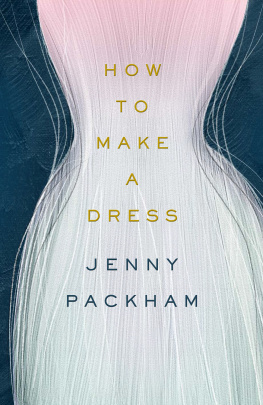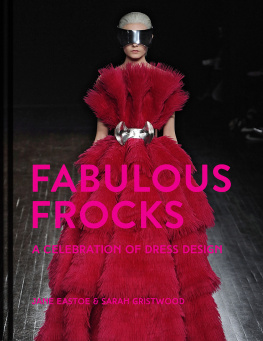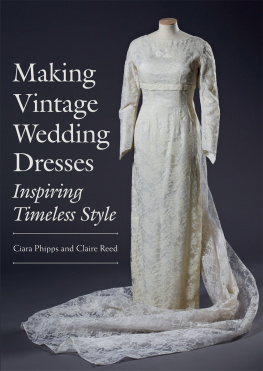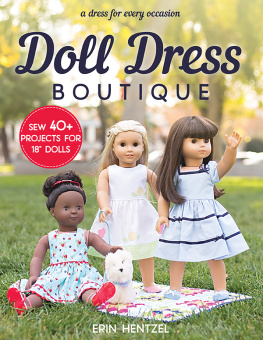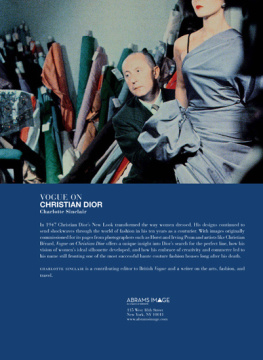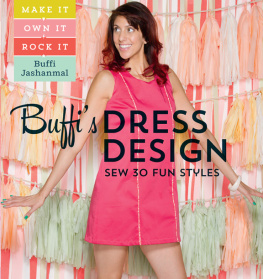Dreaming of Dior
Every dress tells a story
Charlotte Smith
Illustrated by Grant Cowan


A Division of Simon & Schuster, Inc.
1230 Avenue of the Americas
New York, NY 10020
www.SimonandSchuster.com
Text copyright 2009 by Charlotte Smith
Illustrations copyright 2009 by Grant Cowan
Originally published in Australia in 2009 by HarperCollins Publishers Australia Pty Limited
All rights reserved, including the right to reproduce this book or portions thereof in any form whatsoever. For information address Atria Books Subsidiary Rights Department, 1230 Avenue of the Americas, New York, NY 10020
First Atria Books hardcover edition April 2010
ATRIA BOOKS and colophon are trademarks of Simon & Schuster, Inc.
For information about special discounts for bulk purchases, please contact Simon & Schuster Special Sales at 1-866-506-1949 or business@simonandschuster.com.
The Simon & Schuster Speakers Bureau can bring authors to your live event. For more information or to book an event, contact the Simon & Schuster Speakers Bureau at 1-866-248-3049 or visit our website at www.simonspeakers.com .
Designed by Jay Ryves at Future Classic
Manufactured in China
10 9 8 7 6 5 4 3 2 1
Library of Congress Cataloging-in-Publication Data
Smith, Charlotte.
Dreaming of Dior : every dress tells a story / Charlotte Smith ; illustrated by Grant
Cowan.1st ed.
p. cm.
1. Vintage clothingCollectors and collecting. 2. Womens clothingCollectors and collecting. 3. Fashion designCollectors and collecting. I. Title.
NK4704 .S52 2009
746.92074dc22
2009045026
ISBN 978-1-4391-8755-5
ISBN 978-1-4391-8757-9 (ebook)
For Doris
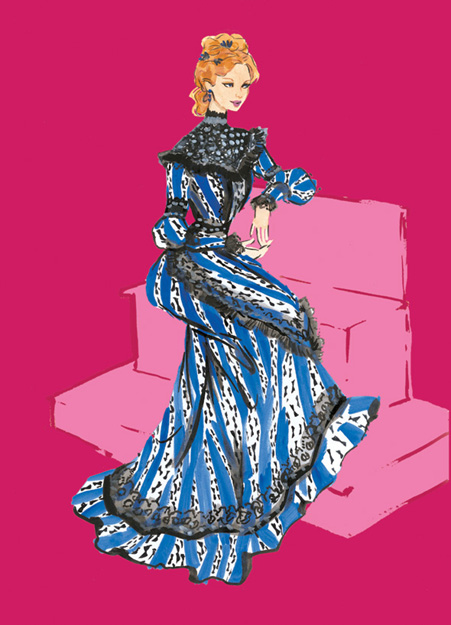
Acknowledgements
Dreaming of Dior has been a truly collaborative book and everyone has been instrumental in creating it - and getting it to the printers on time! My special thanks go to:
Grant Cowan, whose incredible skill as an artist transformed each treasured dress into a to-die-for illustration. It was so much fun working on this together.
To the wonderful dynamic team at HarperCollins Australia, Consulting Publisher Fiona Henderson and Senior Editor Jo Butler for their unwavering belief and commitment that this was the little book that could, and for their positive guidance and editing.
To Creative Director Helen Biles for seeing the big picture, along with editor Kim Swivel. Thanks also to Annabel Blay, Natalie Costa Bir, Marie Slocombe, Jane Waterhouse and everyone working behind the scenes at HarperCollins. Their expertise, guidance and enthusiasm has been phenomenal.
To Penelope Leonard and Katrina Skinner, my supportive friends and colleagues at ESMOD Australia.
My beautiful daughter Olivia, who patiently sat through countless long meetings.
My parents, Noble and Margaret, who gave me the confidence to go out and enjoy life at its fullest. And, of course, all the wonderful donors who gave their treasures and stories to Doris and me in love and in trust.

Inheriting a priceless vintage clothing collection containing more than three thousand pieces sounds like every womans dream come true.
But all I could think after my American godmother Doris Darnell told me her invaluable legacy was on its way across the world to me was: What on earth am I going to do with it?
Doriss collection had been a lifetime labour of love for her, more precious than any treasure I knew of, and she had chosen me as custodian. I was simply overwhelmed.
That is, until the first box arrived at my home in the Blue Mountains. I peeled back the packing tape, pushed aside layers of white tissue and caught my breath at what lay inside. It was a gown of gossamer silk in the palest cream with silver beads glistening over and beyond the bodice; panels of frothy chiffon slipped through my hands as I raised it to the light. I had unearthed my first treasure. I was instantly enchanted, as Doris knew I would be.
For the next three months Christmas came every day. Out came strapless ballgowns with vast, sumptuous skirts of taffeta and moir silk, velvet hats bedecked with exotic plumes, organdie party dresses in every style and hue and every stitch, every sequin, ribbon and silk petal reminded me of Doris.
When I was a child growing up in Philadelphia, Doris was the ultimate fairy godmother. Tall and elegant, flamboyant and utterly charming, she was exotic and unpredictable in a thrilling way. She always dressed in clothes from a time long ago, swishing bustle skirts, lace blouses and trailing feather boas. Clothes that no one else wore, and no one else could wear with quite the sense of drama that Doris did.
I grew up thinking everyone had a special room in their house full of nineteenth-century hats and crocodile handbags, and that every woman had - or should have - wardrobes and trunks filled with rainbows of shimmering gowns.
Each time I visited Doris, the two of us would climb the impossibly narrow and steep staircase to the top floor of her townhouse and lose ourselves for an hour or two amid her latest acquisitions and old favourites. For me this was where magic happened, brought alive by Doriss wonderful stories about the dresses and the women who wore them. Her eyes would sparkle as she recounted the adventures of 1920s flappers, Edwardian ladies at high tea, new brides, debutantes and pioneer women. And it is these stories that make her collection unique.
Doriss collection is a spellbinding journey spanning two hundred and five years, from 1790 to 1995, and encompassing famous couturiers like Lucile, Madeline Vionnet, Dior, Galanos and Jean Muir, but not one bit of it was purchased by her. They are all gifts from friends and acquaintances who either knew or had heard of her legendary hobby. As the Quaker saying goes, every piece was given in love and in trust. Doris was a Quaker her whole life, and while her passion for clothes and accessories was frowned upon as immodest and frivolous by the elders of her religion, her passion remained as irrepressible as her character.
In the spirit of love and trust, Doris devoted the last few decades of her life to sharing her collection with the world. Throughout the 1970s and 1980s, Doris became well known throughout the east coast of the United States and beyond for her living fashion talks, which she would give in museums, college halls and even on cruises around the world, including the QEII, donating her speaking fees to the Quaker Society of Friends. Her audiences were invariably so enchanted by her shows that they would donate some of their own treasures to the collection, from a great aunts pair of Victorian dancing slippers to the latest designer gowns by Chanel and Dior. And so the collection continued to grow, more and more stories were added to share, until the baton was passed on to me.
The treasures that lay before me were worth a fortune. Selling them would set me up for life, but enticing as that thought was, I could never consider such a thing or the idea of them being broken up by donation to museums or other collections. I still had no idea what to do with the collection, but somehow, like Doris, I would find a way to share it, and to keep it growing. Over the years, Doris had loaned me some of these gowns to wear, for a ball in Oxfordshire, a wedding in Monaco I had so many stories I could add too.



